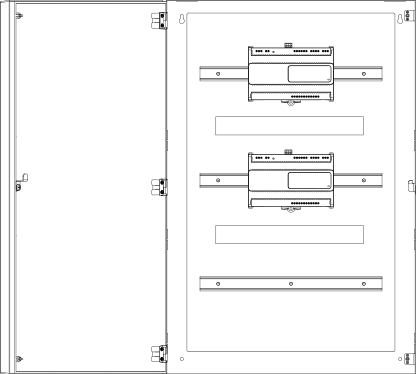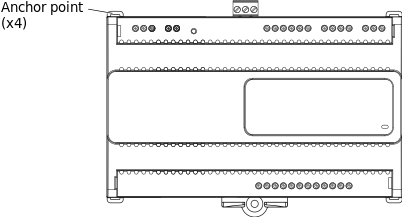
Explicación de procesos
Installing an RP-IO Module on a Flat Surface
You install an RP-IO module on a flat surface to properly fasten the device and to allow for sufficient ventilation.
Refer to the dimensional drawing before installing the RP-IO module.
action_zoom_plus_stroke 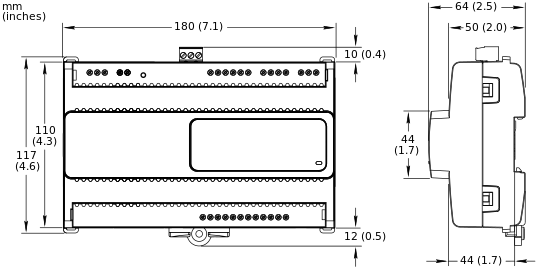
Ensure that you have the proper mounting hardware and anchoring system.
Check the weight-bearing load before choosing your mounting hardware.
Find a suitable location and surface on which to mount the RP-IO module.
Drill three mounting holes that fit number 8 or M4 screws (or anchors):
Two holes for the top two screws on which you hang the RP-IO module
One hole for the screw at the bottom that helps prevent the device from being lifted off the top two screws
Use the following drawing to measure out the location of the three holes for the RP-IO module.
action_zoom_plus_stroke 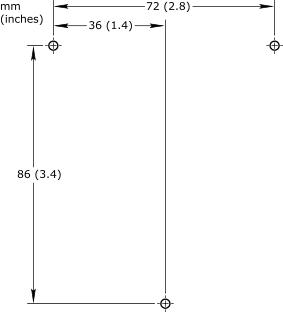
You can also use the 1:1 drill template in the installation sheet that comes with each controller.
Install number 8 or M4 (4 mm) pan head self-tapping screws (or anchors) in the two top holes, leaving approximately 5 mm (0.2 inch) space between the head of the screw (or anchor) and the flat surface to accommodate the RP-IO module material thickness.
action_zoom_plus_stroke 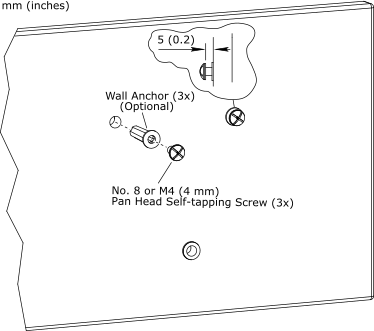
Fit the two keyhole slots on the back of the RP-IO module enclosure to the heads of the mounted screws (or anchors) and then slide the RP-IO module down in place on the screws (or anchors).
action_zoom_plus_stroke 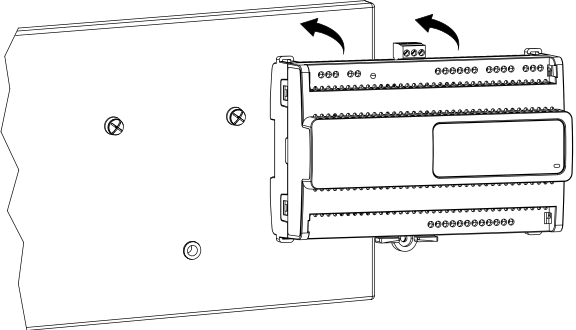
Fit the bottom screw (or anchor) to the hole at the bottom of the RP-IO module and tighten the screw (or anchor).
action_zoom_plus_stroke 
 RP-IO Module Device Installation
RP-IO Module Device Installation
 Installing an RP-IO Module on a DIN Rail
Installing an RP-IO Module on a DIN Rail



